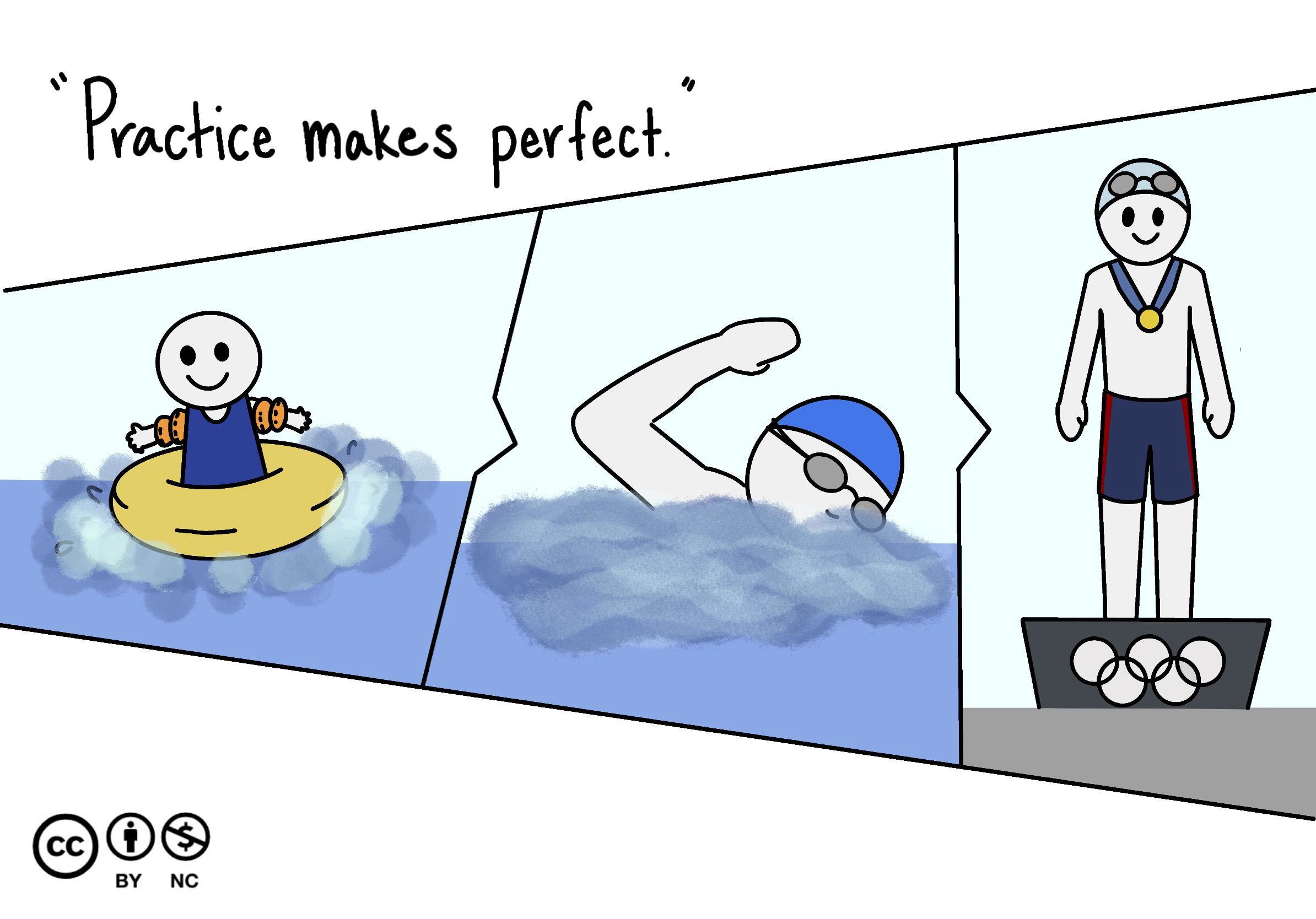Chapter 1 – The Secrets of Language Learning
Introduction
Bibi Halima and Keli Yerian

If language learning were a perfect art, we would all need… Help!
What if someone told you that you couldn’t pick up a paintbrush unless you were already a great artist? What if someone said you could only swim in the pool if you were an Olympic-level swimmer? Or that you couldn’t make pasta in the kitchen because you’re not yet a 5-star chef? You would immediately know that such high standards are ridiculous. Then why do many of us have such fear of learning languages ‘imperfectly’?

Similarly, language learning is not something you need to perfect in order to enjoy it or to be successful. In fact ‘perfect’ is not even a realistic concept when it comes to how languages work. Does this surprise you? You might have felt perfection was required when you were facing a test in your language class and you couldn’t remember when to use Spanish ser vs. estar, or which word order to use in Japanese, or which tones you should apply to each word in Chinese. Many of us are used to measuring our success by how well we passed those tests.
But on the flip side, imagine going to Mexico and successfully asking where to find the bus stop and the shops, even though you used ser instead of estar almost all the time. Or picture yourself in Beijing roaming the street markets, negotiating with vendors in Chinese and successfully bringing fresh produce back home despite hearing some unfamiliar tones. Or see yourself in Alexandria going to a local café and successfully placing your order in Arabic without perfecting the difference between the Arabic glottal stop hamza and the Arabic vowel fathah.
In these flip-side examples, how did it go? Yes, everything went fine! We could even say ‘perfect’ because you used language successfully to get something done. Instead of ‘practice makes perfect’, we could say ‘practice makes proficient’.
![Comic: "Practice makes [deleted]perfect [replaced with] proficient." description in caption.](https://opentext.uoregon.edu/app/uploads/sites/31/2024/09/practice-makes-perfect-2-300x210.jpg)
So now allow us to rephrase and say,
If language learning is an art, we are all creative artists. Human artists and human learners!
There is no secret code and no shortcut to language learning but there is a way to understand how humans learn languages. In this chapter, we will put these pieces together that will help you see your (nearly) limitless possibilities to learn and liberate yourself in the language(s) you are learning.
Chapter Goals
At the end of this chapter, I will be able to:
- Compare language and communication
- Identify some common language learning myths
- Determine where I stand on the continuum of I-can and I-cannot mindset
- Discover what motivates me to keep going on my language learning journey
- Learn the secrets of polyglots
Media Attributions
All original illustrations on this page © Addy Orsi are licensed under CC BY-NC 4.0 (Attribution NonCommercial) license.
Image Description
Figure 1: Practice Makes [deleted]perfect [replaced with]Proficient
Comic with text in Spanish, and translated to English:
Panel 1: a person in a blue shirt talks to themselves in the mirror. “¿Dónde está la parada de bus? ¿Dónde está la parada de bus?” “Where is the bus stop? Where is the bus stop?
Panel 2: The same person talks to a person on the street, “Perdón, ¿dónde es la parada de bus? Excuse me, where is the bus stop?” They respond, “Gira a la izquierda y está allá. Go to the left and it’s there.”
“¡Muchas gracias! Thank you so much.”
Hamza (ء) in Arabic script is a letter or a sign on the letter that represents a glottal stop, which is a sound produced by briefly stopping airflow in your throat or glottis. An abrupt little pause in the middle of saying "uh-oh" is a glottal stop
Fathah in Arabic script is a small diagonal line placed above a consonant indicating a short vowel sound. For example, پَ has a fathah on the letter پ that makes the sound "pa"

